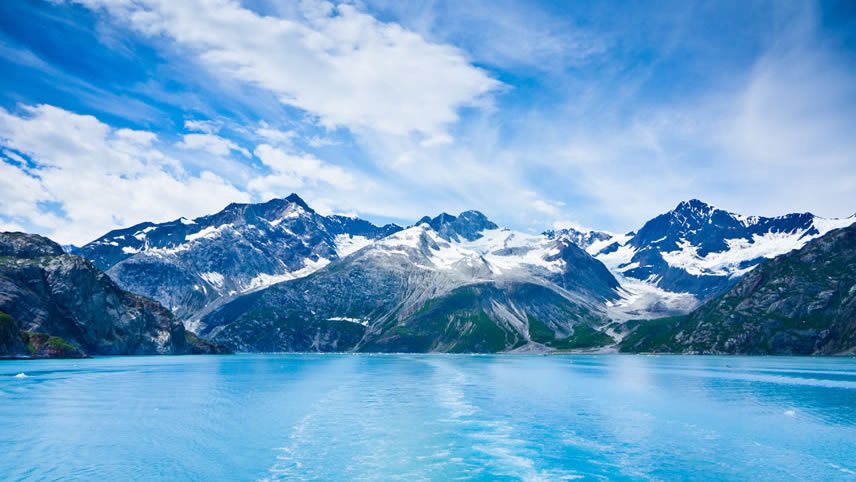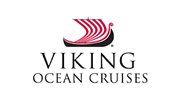Overview
Itinerary
Embark your ship and settle into your stateroom. Vancouver is one of Canada's most diverse cities and the influence of its multi-ethnic society is reflected in the city's multitude of restaurants and public settings, such as the tranquil Dr. Sun Yat-Sen Classical Chinese Garden at the heart of Chinatown. The city's cultural treasures reflect its indigenous community and embody the influence of European and Asian settlers. Its vibrant institutions run the gamut, from bustling markets to museums that chronicle the region's anthropology and rich art heritage.
Stretching some 500 miles along the Alaska Panhandle, the Inside Passage is a pristine wilderness of fjord-like channels. It winds its way through a vast maze of islands laden with emerald-green forests and strewn with glistening glaciers. Nature is at her most magnificent here, tranquil and hushed. Unspoiled waterways weave their way past tiny coastal villages and a breathtaking array of snowcapped mountains and pine-covered hills. Sea lions and otters reside in these waters, and moose and brown bears are often spotted as they wade along the coast.
Ketchikan is set among the soaring coastal mountains and sloping woodlands of the Tongass National Forest. The gateway into America's 49th state, it is known to travelers journeying north by ship as Alaska's “First City” and the “Salmon Capital of the World” for its thriving fishing industry. Ketchikan also embraces its rich and enduring Tlingit heritage; it is home to the most standing totem poles anywhere in the world. The artful icons are sprinkled throughout the town as well as its parks and cultural centers.
Sitka has long been inhabited by the indigenous Tlingit people. Fur trading brought Russian settlers here in 1799 as part of a colonial merchant company. The town grew to become the capital of Russian Alaska, and remains of those days can be found in the Russian Orthodox Cathedral and the Russian Bishop's House, the latter built by the Tlingit with guidance from Finnish carpenters in the 1840s. Today's Sitka is a delight to explore by foot, its streets dotted with inviting art galleries displaying artwork inspired by the region's natural beauty and rich heritage.
Glacier Bay, a UNESCO World Heritage Site, is a breathtaking alpine paradise at the northernmost reaches of the Inside Passage. The Sitakaday Narrows lead into its waters, passing the pristine Beardslee Islands to the east. The bay feeds several inlets that wind their way deeper into the mountains, all surrounded by soaring ice-capped peaks and forested shorelines. Glacier Bay is part of a national park, a haven for wildlife including sea lions and otters, brown bears, moose, bald eagles and, in summer, humpback whales.
Surrounded by glacier-carved mountains and fed by the enormous Hubbard Glacier, Yakutat Bay spreads some 18 miles across at its widest point. On calm days, snow-covered slopes are reflected in the mirror-like bay, casting the entire scene in a soft, icy azure glow. Disenchantment Bay extends farther inland like a finger; at its farthest point, Hubbard Glacier creeps seaward from its source five miles away. The ice at the water's edge began its journey from near Mt. Walsh more than 400 years ago in the early 1600s.
Valdez enjoys a breathtaking setting at the tip of a deep-cut fjord in Prince William Sound. The glacial Chugach Mountains rise up all around the city, adding to its scenic allure. In its early days, the promise of gold attracted explorers and seekers of wealth, but the land proved barren. The town finally experienced its economic boom as North America's northernmost ice-free port. Today, it is the southern terminus of the Trans-Alaska Pipeline that carries oil south from Prudhoe Bay on the Arctic coast.
Seward enjoys a magnificent setting between snowcapped peaks and Resurrection Bay, a pristine harbor ringed by mountains. The Alaskan city was named after Abraham Lincoln's secretary of state who defied public opinion to pursue the purchase of Alaska from Russia. Seward is steeped in marine culture, from its busy fishing port to the excellent exhibits and preservation efforts of the Alaska SeaLife Center. It is also the famed starting point of the Iditarod Trail, the dogsled race route originally laid to link Seward to inland Alaska.
Kodiak plays an outsize role on its namesake island home, known as Alaska's “Emerald Isle” for its green hillsides. It is the only link to the outside world, so all goods enter and leave through its port. Inhabited by Alutiiq natives for more than 7,000 years, it became the capital of Russian Alaska in the 18th century. Sea otter pelts were the major commodity of export until the animal was almost hunted to extinction. For 150 years, the native people fought for the beloved creature, sacrificing their lives to protect them. Today, the sea otter thrives here once again.
The Gulf of Alaska stretches from the Aleutian Islands to the Inside Passage. Teeming with marine life, it meets dramatic shores lined with the pristine wilderness for which Alaska is celebrated. The state's famed soaring mountains dominate the landscape, their ravines and peaks draped with snow. Lush green forests spill down steep slopes and gleaming tidewater glaciers stand like white monoliths at the water's edge. The tiny outpost towns and villages that dot the shoreline still rely on the sea for their livelihood, offering a glimpse into life in this unspoiled region.
Known simply as “Dutch” to locals, the charming town of Dutch Harbor is nestled on Unalaska, one of the Aleutian Islands. The Aleut people called this picturesque place home for nearly 10,000 years—long before the arrival of the Europeans. During the mid-1700s, Russia began trading furs and established a settlement here, trading as the Russian-American Company. The Holy Ascension Russian Orthodox Church, featuring its iconic onion domes, remains a recognizable landmark in Dutch Harbor and is a symbol of Russian influence on Aleut culture to this day.
Set sail into one of the world's most productive eco-systems. The Bering Sea boasts deep marine canyons that feature varied temperatures, creating upwellings of nutrients that attract countless hungry fish and predators. Meet fellow guests and listen to the soothing sounds of classical music in the Living Room, an ideal setting for relaxation. Enjoy a cup of coffee or sip on a refreshing cocktail.
Crossing the International Date Line is a time-honored travel milestone long marked by ceremony. A journey west across this imaginary line between the poles moves time forward by 24 hours, effectively skipping a day. While traversing this meridian, it is tradition to celebrate the occasion by raising a glass to the event.
The Mighty Pacific Leg is one of the most anticipated crossings of the Clipper Round the World Yacht Race. The crossing of the North Pacific Ocean, one of the last great wildernesses on the planet, is one of the race's highlights. Enjoy the amenities of your ship as you sail. Perhaps take a breath of fresh air on a brisk walk around the Promenade or begin your day with a workout in the well-equipped Fitness Center.
The Okhotsk Sea, one of the world's most biologically productive seas, is considered the “heart” of the vast Pacific Ocean, supplying the larger body of water with life-enriching oxygen, cold seawater and nutrients. As you sail, explore our well-curated Library, tucked in a private alcove of the Living Room, and select from a broad range of titles. Read a book by the Main Pool, a calming oasis in any weather with its retractable roof, allowing for year-round swimming.
Sapporo is renowned for its traditional cuisine, green spaces, revered shrines and market culture. The city was developed with the help of President Ulysses S. Grant's commissioner of agriculture, who became an oyatoi gaikokujin, a foreign adviser, at Grant's request. Since then, Sapporo has been recognized for its ability to transform the natural world into the highest art. It is, however, perhaps better known as the city where miso ramen was invented; restaurants line the historic Original Sapporo Ramen Alley to celebrate the noodle's many forms.
Sapporo is located along the Ishikari Bay, an inlet of the Sea of Japan. It is not only the capital but also the largest city of Hokkaidō island, often referred to as the “Kingdom of Food.” As such, savvy travelers can be certain a visit to Sapporo will not leave them in want of tasty delights—particularly fresh seafood, for which the city has become nearly synonymous. From crab to salmon roe to sea urchin, some of the finest selection of seafood can be found in downtown Sapporo at the historic Nijo Fish Market, where visitors can indulge in sushi or a kaisendon.
The Tsugaru Strait links the Sea of Japan to the Pacific Ocean, flowing between Japan's two major islands—Honshū to the south and Hokkaidō to the north. At its narrowest point, just 12 miles wide, green slopes rise on the Tsugaru Peninsula to the south and the coastal Matsumae to the north. Halfway through, a broad channel flows into Honshū to form Mutsu Bay. At the strait's other narrow point, the small town of Ōma rests on the northernmost tip of Honshū; opposite, Hokkaidō's Hakodate, with its namesake mountain watching over, is one of Japan's most modern cities.
Tokyo is a spellbinding blend of neon splendor and tranquil Shinto shrines, towering skyscrapers and meditative Zen gardens. Founded as the tiny fishing village of Edo, Tokyo's history was shaped by emperors and shoguns. As the Edo period progressed, it grew into one of the world's largest cities, as it remains today. Tokyoites embrace the traditional and the cosmopolitan here, both worshipping at the city's Asakusa Kannon Temple and frequenting the high-end retail stores of the Ginza district, all while the distant symmetrical cone of Mt. Fuji watches over the city.
Tokyo as a city was officially dissolved in 1943 and 23 independent municipalities were formed, known as ku. Each neighborhood is representative of a small city yet collectively, they are still recognized as Tokyo. Exploring this vast city is easy, thanks to Tokyo's excellent transport system. Look to the skies and admire its ever-changing skyline with towering buildings in every corner of the city. Observation platforms feature in many, including Mori Tower or the Metropolitan Government Building.
Located for centuries on the site of modern-day Tokyo, the small fishing village of Edo grew into a city during the Tokugawa period, when it became the capital of the Tokugawa shogunate. It became the capital of Japan during the Meiji Restoration of the mid-19th century and was renamed Tokyo, meaning 'eastern capital.' Japan's largest city since the 17th century, Tokyo's population exceeded one million during the late 19th century, and as the country's political, economic, and cultural center, it has become one of the world's most populous cities.
Shimizu is a scenic city set on Suruga Bay, watched over by Mt. Fuji. It has long been a thriving harbor town and prospered during the Edo period. Today, its economy stands upon a vast fishing industry and on the export of green tea, whose leaves are cultivated in nearby hills. Beyond the city limits, wide plains reach coastal hills, and to the original burial place of the nation's first shogun. This Shinto shrine, Kunōzan Tōshō-gū, is Japan's oldest. With its flamboyant design, it is dedicated to Tokugawa Ieyasu, the leader who unified Japan after years of civil war.
Historic Shimizu and its port increased in importance after Tokugawa Ieyasu chose Sumpu Castle as his place of retirement in 1605. By the early 20th century, tea exports were the mainstay activity, while today, the port handles a wide variety of cargo. Along the waterfront, a modern shopping mall houses eateries, movie theaters and a Ferris wheel. While a little further afield, the Kashi-no-Ichi Market sells the day's catch.
Osaka is located at the mouth of the Yodo River and is second only to Tokyo in size and cultural landmarks. For centuries, it prospered because of its mercantile economy. During the Edo period, it introduced agriculture, particularly rice, to its exports and was soon known as 'the nation's kitchen.' The city is home to some of Japan's oldest Shinto shrines. Its Sumiyoshi Grand Shrine is the flagship of 2,000 others spread throughout Japan. Each honors the guardian deity of sailors and the deity of prosperity, but the one here is the most majestic.
Hiroshima was founded in 1589 and grew to become one of Japan's most important educational and industrial centers. Military supplies were later exported from here, an industry that would seal the city's fate at the end of World War II, when an atomic bomb was dropped here on August 6, 1945. It is hard to imagine the destruction today, so modern and forward-looking are its streets and its people. In Peace Memorial Park, the hollowed dome of the former Industrial Promotion Hall symbolizes the city's hope that nuclear weapons will never be used again.
Hiroshima's delta is divided into several islets. It was upon one of these islets that Mōri Terumoto (1553–1625), a feudal lord who ruled over much of the Chūgoku region, constructed Hiroshima Castle. This solidified the city as a jōkamachi ('castle town'). Although the castle had successfully survived into the 20th century, it was unable to withstand the atomic bombing of the city during World War II. In 1958, Hiroshima Castle was restored to its original splendor, complete with a main keep and moat. Today, it houses a museum providing insight into the city's rich history.
Nestled on the island of Kyushu, between Beppu Bay and a range of picturesque mountains, Beppu is renowned for its hot springs. These onsen, as they are known in Japanese, emerge from eight geothermal hot spots that together boast the second-largest volume of hot water in the world. Since Japan's Edo period, the waters have been harnessed for curative and health benefits in soothing public baths. Outside the city, landscapes of steaming fissures and mineral-rich bubbling mud pools attract locals and visitors alike.
Historic Kagoshima is often compared to the Italian city of Naples for its mild climate, palm-lined streets and the Sakurajima volcano that reminds so many visitors of Italy's Mt. Vesuvius. Kagoshima experienced great power and prosperity throughout the Edo period. It has been said that the city brought the industrial revolution to Japan's doorstep after 17 young men ignored a ban on foreign travel and set off to explore England and the United States. They returned with ideas that transformed society, using Western science and technology.
Nagasaki is one of the rare Japanese cities where East and West intermingle. The Dejima district provides a fascinating and unique glimpse of European colonialism in the heart of Japan. Portuguese traders had a strong presence here and later Dutch traders lived here for two centuries. Nagasaki changed forever on August 9, 1945, destroyed by an atomic bomb. The city's vast Peace Park contains sculptures donated by countries and artists around the world, each dedicated to world harmony and to an unwavering optimism for a peaceful future.
The East China Sea is a vital maritime route for international trade and fishing, connecting China, Japan and South Korea. Its history is entwined with regional cultural exchange, shaping the area's heritage and identity. Enjoy the amenities of your ship as you sail. Perhaps take a breath of fresh air on a brisk walk around the Promenade or begin your day with a workout in the well-equipped Fitness Center.
Taipei stands proudly as one of the world's most technologically advanced cities. Yet, the city cherishes centuries-old traditions, which have been shaped by Chinese, Japanese and Western influences. The National Chiang Kai-shek Memorial Hall looks over Liberty Square; the ornate landmark honors the leader who led nationalists from mainland China during the 1949 Communist takeover. However, the most prominent symbol of the city's robust development is the famed Taipei 101, the world's tallest skyscraper from 2004 to 2009.
Chinese and Japanese traders traversed the East China Sea for centuries, before the British, French and Americans crossed these waters during the mid-1800s to establish territories outside the walled city of Shanghai. As you sail, take advantage of the array of delicious cuisine offered on board. You may visit Mamsen's, our casual gourmet deli, any time from early morning to late at night for a taste of traditional Norwegian fare. Or, dine at Manfredi's and savor an authentic Italian meal, with options ranging from Milanese risotto to Tuscan inspired classics.
A British Overseas Territory until 1997, Hong Kong is home to long-cherished Eastern traditions amid modern Western sensibilities. This forest of glittering skyscrapers stands between soaring mountains and bustling Victoria Harbour. The entire sweeping vista is best taken in from atop Victoria Peak, lush with landscaped gardens and footpaths. Back down at sea level, Aberdeen provides a fascinating glimpse of China old and new as a skyward-reaching cluster of residential towers watches over a bustling bay where floating villages bob in the waters beside stylish pleasure boats.
Bid farewell to your fellow guests and journey home. Or spend more time exploring, perhaps joining one of our extensions.
Life Onboard Viking Orion
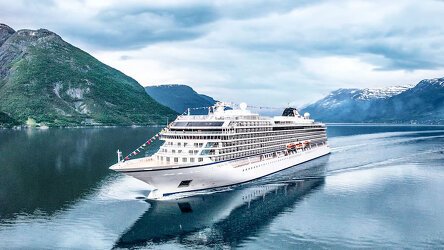
Launched in 2018, the Viking Orion is an all-veranda ship, part of a fleet of award winning, state of the art ships incorporating all the comforts & luxuries you would expect from Viking. Read more

Viking are destination experts. With no casinos or children on board, you can be assured that the focus is firmly on enrichment and education. Read more
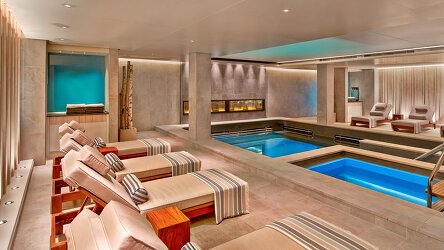
After a day of exploration or just to enhance the relaxation of a day at sea, the on-board Spa will leave you feeling recharged and revitalized. Read more
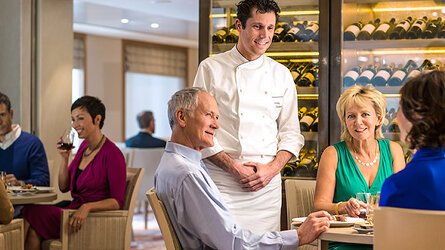
Viking offer eight on board dining options. Beer, wine and soft drinks are available with lunch and dinner at no additional charge of fee. Read more

Viking proudly includes all that you need and nothing you do not. A variety of features and services valued at $200 per person per day are standard inclusions in your cruise. Read more
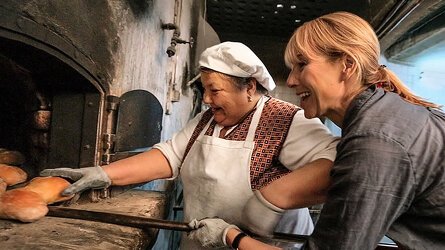
Viking include one complimentary shore excursion in every port of call. Enjoy exclusive entry to cultural treasures and seldom-seen collections around the world. Read more

Trip Reviews (7) View All Most Recent 'Far East & Alaska' Reviews
Stops we particularly liked were Icy Strait Point, Sitka and Ketchikan. Haines was a disappointing stop as there's really nothing to do there and the "famed" Raptor Centre turned out to be a few sad bald eagles in very small cages and lots of stuffed wildlife specimens. Skagway would have been preferable. Wildlife sightings didn't happen - but the weather was perfect - so you can't have everything! Hubbard Glacier was also good - although a long day in fog to get to actually see the mammoth glacier! Finishing in Vancouver was great as it meant just one flight home - instead of the 2 to get to Anchorage and the reasonably long transit between which made for a very long start to the trip. Thanks Jemma - talk soon again...about our next travels!!
Viking Orion was a magnificent ship having everything included (except spa) made for a relaxing cruise. Crew were fantastic and food exceptional. Japan was wonderful with plenty of time to take ...read more in the culture and beauty. Scenery and wildlife in Alaska was spectacular although we were disappointed that 3 excursions were cancelled and some ports visits were short. The shuttle buses provided by Viking made it an ease to go downtown and we always got a warm welcome back! Crossing from Japan to Alaska, 7 days at sea was a bit long for us. Extension of Vancouver we would have been better to have done on our own. We made incredible friendships we would definitely cruise with Viking again and book with Georgie at Global Journeys. Big thanks 🌺
We really enjoyed the high quality of the food and we especially liked being able to book into the fine dining "Chef's Table" or the Italian "Manfredi's restaurant" if we pleased (available to all at no extra charge). A real highlight for me was participating in a French cooking lesson with 11 others. It was run by one of the chefs on the cruise. We also appreciated the talks given by the resident historians and specialists on board.
We certainly would book another cruise with Viking - in fact we have already done so! Jemma at Global Journeys was excellent. She responded to any enquiries relating to the trip very promptly and ensured all paperwork was in place in a timely manner. Thank you Jemma.
Brochure
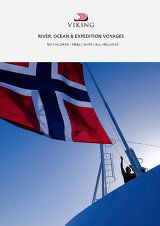
Viking River, Ocean & Expedition Voyages (2025-27)
Availability
 USD
Port charges, taxes and fees included.
USD
Port charges, taxes and fees included.
Viking Cruise $25 Deposits!
Tour & cruises prices are per person. Prices shown have savings applied, are subject to availability and may be withdrawn at any time without notice. Pricing and trip details are correct at this point in time, however are subject to confirmation at the time of booking and are subject to change by Viking. For cruise itineraries, cabin images are sourced from Viking. These should be treated as indicative only. Cabin inclusions, upholsteries and room layout may differ to the image(s) shown depending on the ship selected and your sailing dates.
